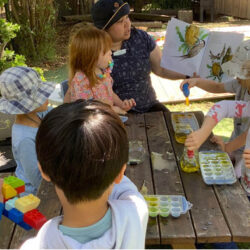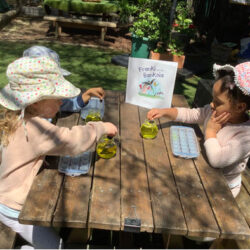Johnson House
Story by Educator Alisa
This week, 13–21 November, is Australian Pollinator Week, which acknowledges the important and unique insect pollinators during our southern spring.
To increase our awareness of the importance of pollinators, and to learn how to better support their needs, we read the story ‘Franki and the Banksia’, by Leanne Murner. We discussed how bees are one of the important pollinators who collect nectar from flowers to make their honey. The nectar is also a source of food for some insects, animals and birds. We also learned the many uses of the Banksia flower, such as being a source of food for some animals and a source of sugar water for some Aboriginal people, and how Banksia cones can be used transfer fire from one place to another. The children had thought it was impossible to move fire from one location to another as it is very dangerous.
After the story the children engaged in a fine motor game to better understand what happens when bees collect nectar from the flowers to take back to their beehives. Using droppers, the children transferred yellow coloured water, which symbolised the ‘honey’, and squeezed this into ice cube trays. As the ice cube trays filled with ‘honey,’ the children then squeezed this into containers that they called ‘beehives.’ The droppers served as the insects’ ‘proboscis’ or, as the children described them, the ‘bees’ tongues’.
This experience served as an opportunity for the children to learn about pollinators such as bees, and to begin to understand the process of pollination, which encourage flowers to bloom and trees to bear fruit. The children also learned about how bees extract nectar or pollen from flowers which they then use to make honey.

